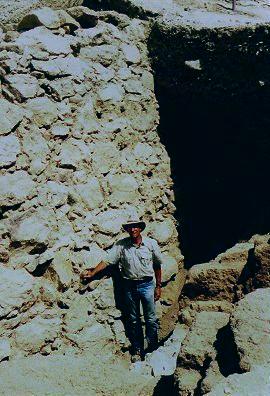The Ancient Fortified
City of Jericho

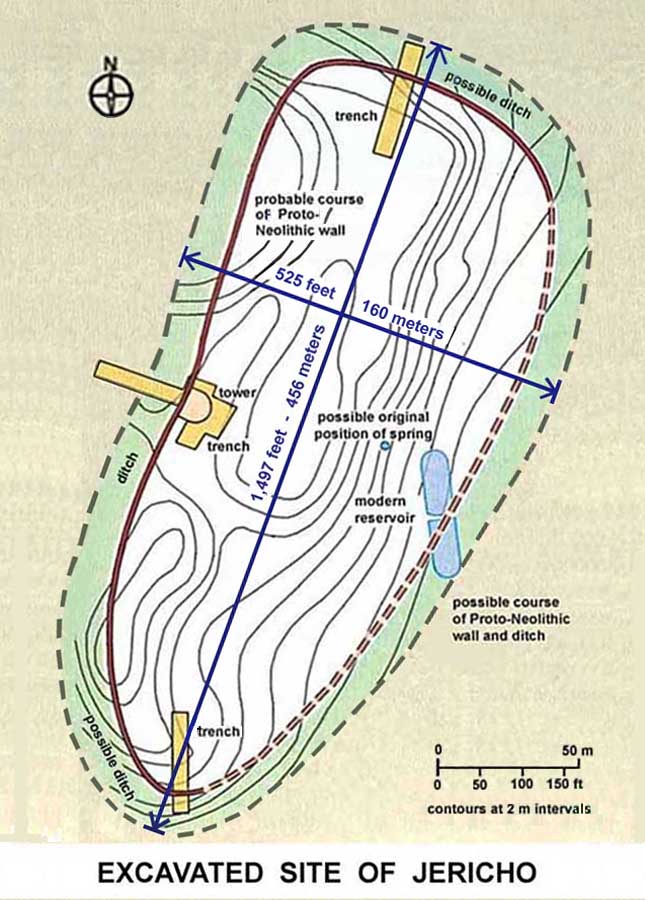
Jericho
ranks second only to Jerusalem in the number of archaeological excavations because
it contains some of the world's most
important historic sites that are related to the Bible. 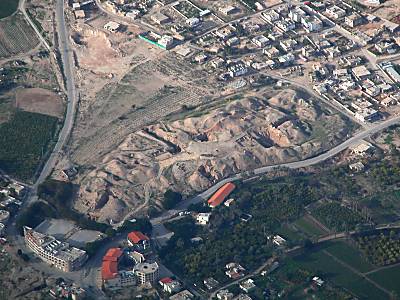
Facts from the Archaeological
Excavations
The first archaeological
excavations of Tell-es-Sultan (ancient fortified city
of
One of the most
significant discoveries of the archaeological excavations is the Neolithic
tower on the western perimeter of the site. The word “Neolithic” refers to the Stone Age
that is characterized by the development of settled agriculture and the use of
polished stone tools and weapons.
The Holy Bible informs
us that “Abel
was a keeper of sheep, but Cain was a tiller of the ground.” (Gen. 4:2) Cain’s son
Enoch had built a city (Gen. 4;17). Tubal Cain, the
eighth generation from Cain was “an instructor of every craftsman in bronze and iron.” (Gen. 5:22)
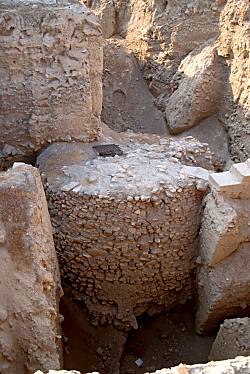 The Canaanites had the knowledge and experience of building the
The Canaanites had the knowledge and experience of building the
There is some speculation as to the reason why the Canaanites had built the tower. Some suggestions
are that it was constructed for the purpose of religion, defense, food storage and
others. The fact of the matter is that the
people who designed and built it were well organized, intelligent and had a good knowledge of construction.
Dimensions of the Excavated Site
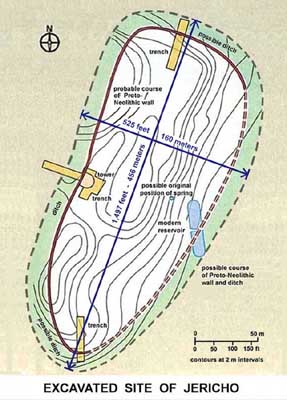
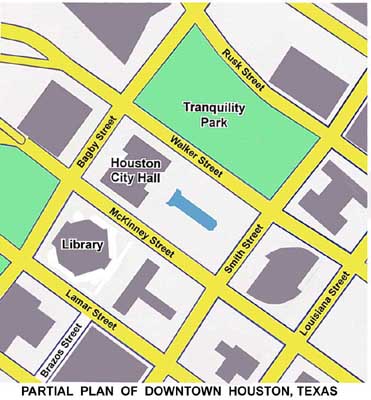
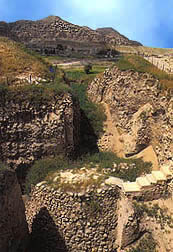
The two illustrations above are drawn to the same scale for the purpose of comparison in size.
The photograph on the right gives an indication of the height of the buildings in this ancient city.
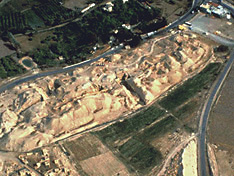
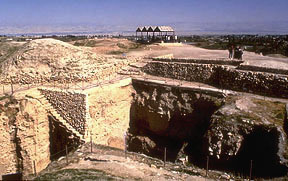 The size of the excavated site is about 10 acres = 4 hectares, which is close to 7 city blocks in Houston, Texas. The length is 1,497 feet = 456 meters. The width is 525 feet = 160 meters. The height is 65 feet = 19.8 meters.
The size of the excavated site is about 10 acres = 4 hectares, which is close to 7 city blocks in Houston, Texas. The length is 1,497 feet = 456 meters. The width is 525 feet = 160 meters. The height is 65 feet = 19.8 meters.
Wall Construction System
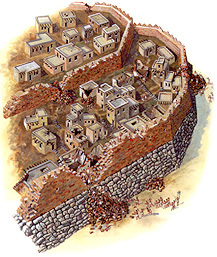

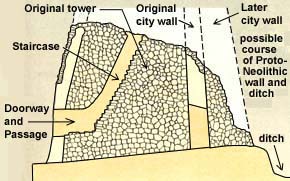
The fortified city of Jericho had used the Double Redoubtable Wall construction system that was used to build fortresses in Europe during the Medieval Age.
Collapse of the Wall
Archaeological excavations indicate portions of the walls of the fortified city have collapsed outwards. The fallen mud bricks and the stone rubble had formed ramps for the invading Israelites to enter the city (Josh. 6:20).
|
In 1990 American archaeologist Dr. Bryant
Wood wrote in Biblical Archaeology Review about his findings in •
The city was well
fortified (Joshua 2:5,7,15;
6:5,20).
•
The attack occurred just after the spring harvest (Joshua
2:6; 3:15; 5:10).
•
The inhabitants had no time or opportunity to flee with
their foodstuffs (Joshua 6:1). •
The siege was short (Joshua
6:15). •
The walls were leveled, possibly by an earthquake (Joshua
6:20). •
The city was not plundered (Joshua
6:17-18). •
The city burned (Joshua
6:24). All archaeologists agree that the wall fell down, but they differ on the date. Dr. Bryant Wood's conclusions are the most informed and he dated the destruction of the wall to the time of Joshua (1400 B.C.). |
Dr. Bryant Wood shows collapsed mud bricks on the excavated
site. |
Time of
the Fall of
Jericho
The Bible tells us when
Dr Garstang, Director of the Department
of Antiquities in Palestine, and his assistants examined over 100,000 potsherds
(fragments of pottery) from the excavated site of Jericho and from these he dated the
destruction of the city to the middle of the Late Bronze Age (c. 1400 BC in
conventional dating). This corresponds
to the biblical dating of Joshua and the Children of
 There is a large grain
supply found in the burnt debris of
There is a large grain
supply found in the burnt debris of
Successful attackers would normally remove valuable grain after capturing a
city. However the Israelites by divine command, were
forbidden to take anything from
This is precisely when the Bible says the Israelites attacked
This is consistent with the biblical account that
Based on such findings, Dr Wood concludes: "The
correlation between the archaeological evidence and the Biblical narrative is
substantial.' This interpretation, if it survives critical appraisal, would be
important to those who believe the Bible is historically accurate.
Click on the Button

The Lord Jesus Christ and
the Conquest of Jericho

